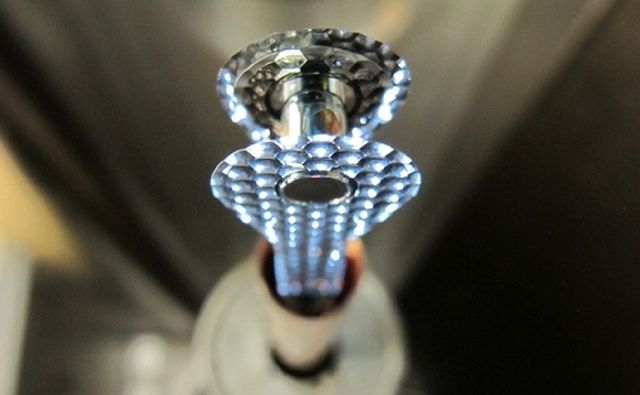LASER FUSION TOOK A STEP FORWARD
Skilled National Laboratory. Lawrence Berkeley managed to get from laser fusion more energy than is needed to hold it, that is a little closer to the realization of fusion energy economically reasonable.
Although this looks like an intermediate step – to be suitable for large-scale power from nuclear fusion to receive many times more energy than is spent – it was unattainable so long that it seemed like it would never do.
National Laboratory for activation of controlled thermonuclear fusion ( National Ignition Facility , NIF) has a powerful complex of today 192 lasers, while using the total energy beams which reaches 1.8 MJ affecting tiny target billionths of a second. Target itself contains a small sphere of frozen deuterium and tritium, which are located inside the plastic ablator (shell evaporating after shelling targets). In 2009-2012 the outcome of the NIF were a lot weaker than expected: it turned out that our theoretical ideas about the effectiveness and problems inertial fusion rather incomplete.
Cavity in which the capsule is fuel for nuclear fusion. Before firing laser cooled to 18 K. (Here and below illustration LLNL.)
At that time, physicists have decided to avoid problems with uneven compression of deuterium-tritium target instead of one high-power pulse, immediately warms target (then that emit X-rays, thereby vaporizing the ablator, ie destroying the “wall”, and began to expand rapidly, from -for what pressure dropped), they gradually warmed her – without sharp single jump.
Earlier thus achieved encouraging results – the impact in 14 kJ and 17 kJ from a single laser “shot” with a total pulse energy, hit the target in 10 kJ. These figures may seem not consistent with the above named Laser power almost equal pair megajoules, but in reality there is no contradiction. Momentum and thermonuclear reaction were literally split second because of what energy costs and returns have been relatively mild, despite the power of the unit.
As noted by a member of the research group NIF Paul Springer (Paul Springer), then in one of the experiments used more smooth heating of the target. This idea probably may seem counterproductive if pre heat the object, the pulse then compress it will be much harder to start a thermonuclear reaction effective pressure is important not less than the temperature.
Yes, squeeze target preheated to a high enough temperature, not very easy, as she begins to expand within, and compress it – it’s like trying to squeeze exercise rubber wheel, pumped his first well. But in practice it turned out not so bad: create pressure before not too succeeded – ablator due to evaporation, followed by evaporation of the target has nothing prevented, so the loss of even more warming smooth, in fact, was not. But the fact that the temperature ablator to failure was significantly raised “step by step”, allowed to increase from one energovyhod “portions” inertial fusion to 26 kJ. And this is almost twice as high as a result of September 2013.
It is also important that the new results are very similar to the preliminary results of computer simulations. Some have questioned the importance of this particular moment, saying that the victory of reason over sarsaparelloy, modeling is not fusion. But here it is worth remembering that before the three consecutive years of modeling promised laser inertial fusion energy output of one, but in fact it came out in 10, it is 100 times smaller. Now at least we know what to expect.
Alas, this opportunity soft target heating approaching its upper limit: a smoother unlikely to give a big boost energy output. But scientists want to help top synthesis by changing the shape of the target on the one that will allow symmetrically “squeeze” its laser pulses.
“The less plastic in the ablator, the faster the fusion fuel to explode – explains Denise Hinkel ( Denise Hinkel ) of NIF. – However, a certain amount of plastic you really need, otherwise starts at heating fuel in the ablation target. It needs an optimal balance, but we have not felt for him. “
Steve Cowley ( Steve Cowley ), head of the center Kullhemskogo fusion energy (UK), believes that a competing approach, when the compression of fuel is due to the magnetic field, came to similar results in 1997: 16 MW input was received at the output of 24 MW . However, neither this nor a close start reactor ITER should not lead to cuts in effort to laser fusion. Now no one can guarantee that ITER will not pursue the problem of low returns, contrary to preliminary calculations, and then have to start all over again. It makes more sense to develop both approaches, pulling them closer to economic feasibility.




